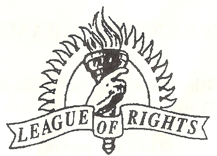The Untold Racial Layer in Lola Daviet's Murder: Why Mainstream Media Sidesteps the Occult "Blonde Child" Racial Angle, By Richard Miller (Londonistan)
Disclaimer: This article discusses allegations raised in a French criminal trial that is currently ongoing. Nothing below asserts guilt or definitive motive. All claims are drawn from publicly available trial reporting, notably from French and English-language media. Readers should treat these elements as unproven until the court reaches a verdict.
The 2022 killing of 12-year-old Lola Daviet in Paris's 19th arrondissement was one of the most disturbing crimes in recent French memory. Her body was found in a suitcase near her apartment building, bound with tape and bearing injuries that investigators described as brutal.
The accused, Dahbia Benkired, a 27-year-old woman of Algerian background, was arrested shortly after CCTV footage allegedly showed her moving the suitcase. Benkired was living in France under an expired residency permit and was subject to deportation orders.
Her trial, which opened in October 2025, has reignited political and social debate across France, about crime, immigration enforcement, and now, according to some reports, about a possible occult or ritualistic motive.
French outlets including Valeurs Actuelles journalist Amaury Bucco have reported that investigators examined statements suggesting Benkired referred to a so-called "custom" involving the sacrifice of a "white and blonde" child to obtain supernatural favour or treasure.
According to Bucco's live trial coverage, police recovered search terms on Benkired's phone related to "human sacrifice" and "witchcraft." Other evidence, still under judicial examination, reportedly included markings on the child's hands and feet that police thought might have symbolic meaning.
Benkired has apologised for the killing but denies that any occult motive existed, telling the court that she acted in a "moment of madness." None of the alleged ritual aspects have yet been proven; they remain the subject of conflicting testimony and forensic analysis.
Australian readers may wonder why the supposed "ritual" element has appeared more in online commentary than in major newspapers such as Le Monde or France 24. There are several practical reasons.
1.Presumption of innocence – French law prohibits commentary that might prejudice a defendant's right to a fair trial. Editors often wait until verdicts are handed down before exploring speculative motives.
2.Verification and sensitivity – Claims involving magic, folklore, or religion are hard to verify and easily sensationalised. Responsible outlets generally avoid publishing them unless backed by multiple corroborated sources.
3.Social tension – France's laws against incitement to racial or religious hatred are strict. Reporting that an accused person invoked ethnic or cultural practices risks being misread as blaming an entire community.
In other words, what looks like "media silence" may simply be legal and ethical restraint. Or, it could just be woke.
Anthropologists note that in some parts of North Africa there are long-standing folk beliefs about so-called "Zuhri" children, youngsters with distinctive features such as light hair or eyes who are thought to possess luck or spiritual energy.
While there are verified cases of crimes linked to such superstitions in Africa, experts stress that these are rare, fringe practices, condemned by mainstream religious and cultural authorities. If French investigators confirm that Benkired mentioned such ideas, it would represent an isolated, and tragic, importation of folklore, not a pattern within migrant communities.
The alleged targeting of a "blonde" child, if substantiated, raises questions about how appearance and symbolism influence violence. But discussion of that element must stay factual and avoid collective blame.
In Australia, similar care is expected under both defamation law (which protects individuals from reputational harm) and racial vilification laws (which prohibit public incitement of hatred or contempt).
Framing the case as a failure of one individual, rather than an entire group or faith, is the legally and ethically correct approach.
For Australian readers, the Lola Daviet case highlights three broader issues:
1.How social media amplifies unverified claims – When mainstream outlets proceed cautiously, online speculation fills the void.
2.The global reach of folklore and superstition – Migration can carry benign traditions and, rarely, darker beliefs that clash with secular norms.
3.The challenge of covering crime ethically in multicultural societies – How to balance transparency with social harmony.
Whatever the court ultimately decides, the Daviet case is a reminder that horrific crimes can become cultural flashpoints when race, migration and belief collide. Discussing those intersections is legitimate.


Comments